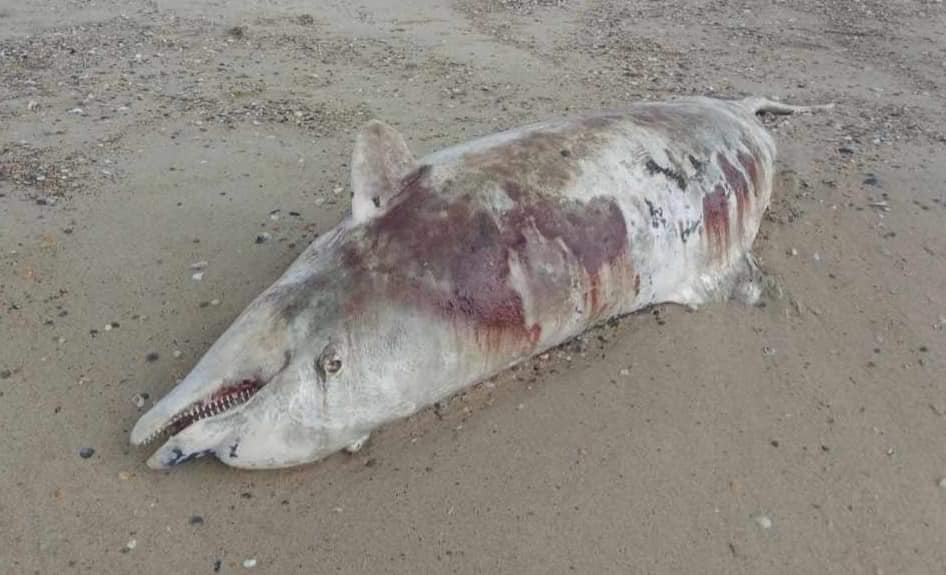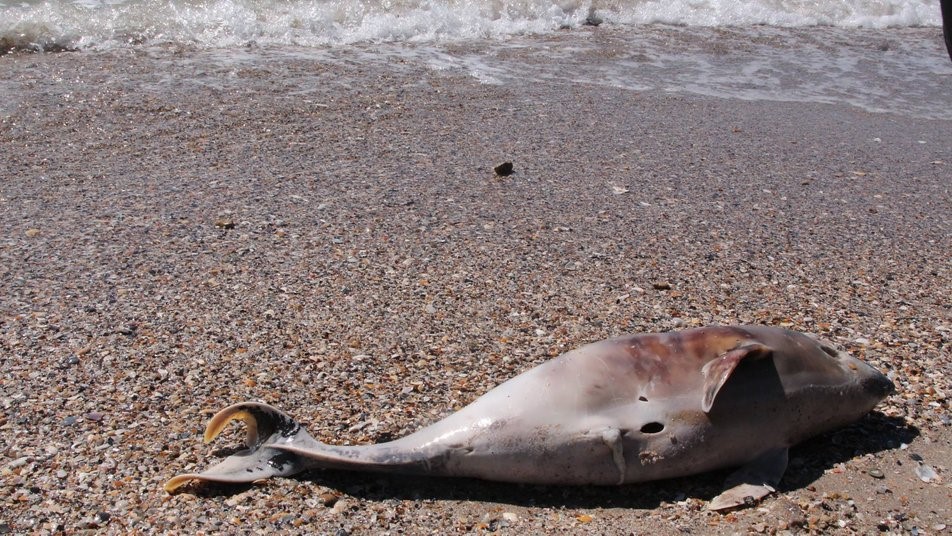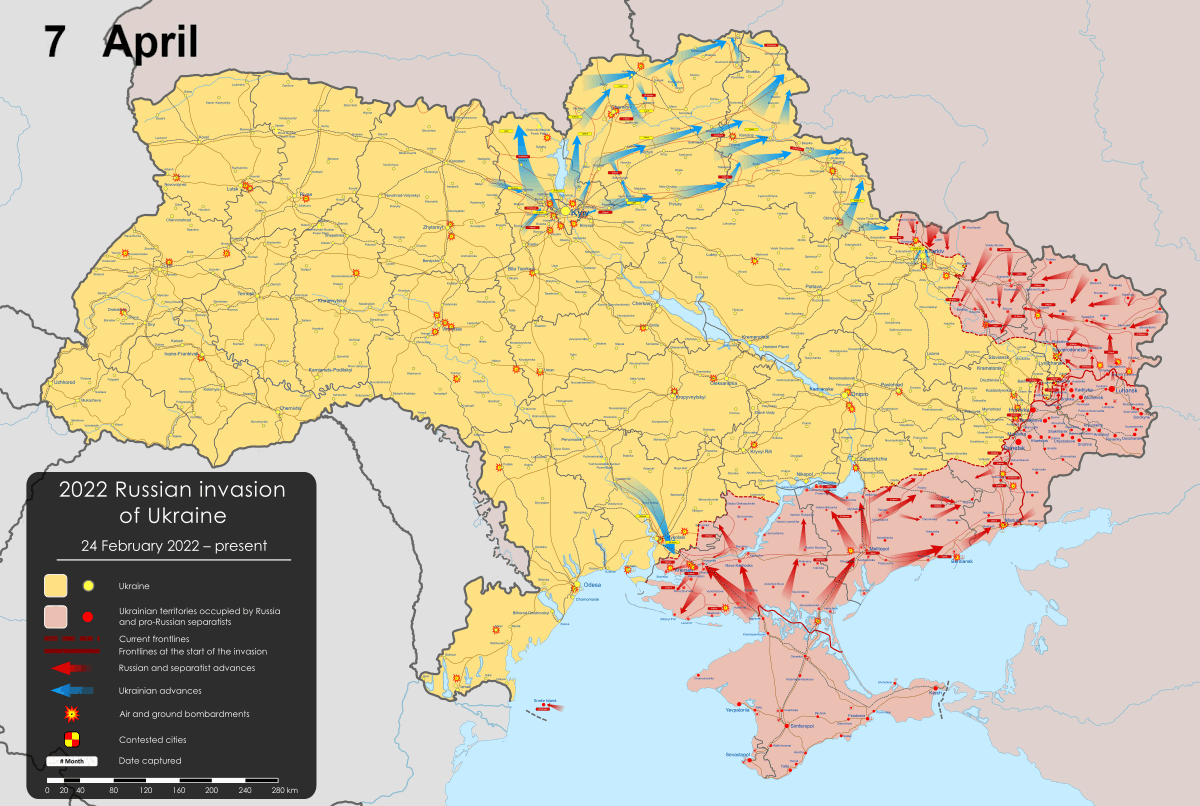ECOCIDE: Animals and birds of Europe - targeted by Russian war criminals
- Тарас Зозулінський
Investigations awarded by the Association of Environmental Journalists and Ecological Tourism from Moldova
In 2022, according to experts, at least 50,000 Black Sea cetaceans died in Ukraine, Romania and Bulgaria as a result of war crimes committed by the Russian aggressor.
The first part can be read here.
The first months of a full-scale war.
The first dead animals began to be found on the Turkish shore of the Black Sea, near the Bosphorus, in March, almost immediately after the start of the full-scale Russian invasion of Ukraine. Fuel and oil spills began to poison the water, which is home to many organisms important to the ecosystem. A mass death of cetaceans was observed in Bulgaria in April. Dolphins also died here at this time of the year in previous years, but now it is many times more than usual.

A dead common dolphin was found in the summer on the Black Sea coast of Ukraine.
Photo: Ivan Rusev, NPP "Tuzlovsky Limany"
In May, just a few months after the sea bombardment began, dead dolphins were found in Romania. Romanian marine biologist from Constanta Rezvan Popescu-Mirceni published the horrifying pictures: "Imagine that the dolphin in the picture, which had an extensive burn wound, was still alive at the time of photography. According to our estimates, they did not eat for at least the last 10 days, judging by the thickness of the adipose tissue. Those who were not burned suffered internal injuries that seriously affected their ability to orient themselves. I can't even imagine what pain this poor animal is experiencing." The incident was recorded just a few days after more than 60 dolphins were found on the shore of the Romanian coast near Sulina, which is an unprecedented phenomenon in the last 20 years. Environmentalists explained that noise pollution from warships could be the cause of mass beaching.
The biologist noted that it is still difficult to assess the scale of the disaster: "They have burn wounds. Most likely, but it is not certain, it is phosphorus. Why phosphorus? Because this substance burns under water, and not only on its surface. And in addition, "We are talking about cetaceans, which are usually found near the shores or even in ports. So it is quite possible that they are near or even in some active theaters of war."
A monitoring mission is currently being conducted in the Black Sea. "Samples will be taken, and in mid-June we will return with information. Monitoring includes several segments in the field of biodiversity and the presence of pollutants in surface sea waters," Popescu-Mirchen added.
Marian Payu, executive director of the non-governmental organization Mare Nostrum from the city of Constanța, Romania, told us that in 2022 the number of dolphins washed ashore increased compared to previous years, but so far it has not been possible to prove a direct connection with the war in Ukraine. "At the level of Romania, no scientific evidence of the impact of the war on cetaceans has been revealed. In fact, 2022 was the year when the largest number of shipwrecks was recorded on the Romanian coast, but the "war-mammals" relationship was not proven, or rather, it was impossible to do so," said Marian Paiu.
Contusion of dolphins.
In the summer of 2023, the specialists of the "Tuzlovsky Lymany" NPP again began to register the death of dolphins.
Doctor of Biological Sciences, Professor Ivan Rusev reported that dolphins are dying both in the Sea of Azov and on the shores of the North-Western part of the Black Sea. In particular, in Bulgaria.
Animals die from the influence of military sonar from underwater and surface boats.
This is the so-called acoustic trauma - something like a contusion. Such injuries occur due to the operation of radars, explosions in the sea, rocket launches.
According to the doctor of biological sciences Pavel Goldyn, the most dolphins - porpoises - are in the Dzharylgat Bay (Ukraine). There they are as numerous as on the shores of Bulgaria and Georgia.
According to the latest scientists' estimates, there are about 250,000 dolphins in the Black Sea, which are listed in the Red Book of Ukraine. These are porpoises, common dolphinand bottlenose dolphins.

Criminal case.
The police of the Odesa region are investigating a criminal case on the fact of ecocide (Article 441 of the Criminal Code of Ukraine). Law enforcement officials established the mass destruction of dolphins as a result of Russia's armed aggression against Ukraine.
Since the beginning of the full-scale invasion, law enforcement officers and environmentalists have identified a large number of dead marine mammals. The probable cause of their mass death is the use by the aggressor vessels of sonar devices (sonars) on underwater and surface boats, which create powerful sounds that negatively affect the health of animals.
Procedural production is carried out by the Specialized Ecological Prosecutor's Office of the Odesa Region.
It sent requests for international legal assistance to Bulgaria and Romania - to confirm similar cases of dolphin deaths.
Representatives of the Institute of Zoology named after I.I. Schmalhausen, Scientific Research Institution "Ukrainian Scientific Center of Marine Ecology", NPP "Tuzlov Estuary" and veterinary doctors are involved in the investigation.
Contamination of the coast of Bulgaria and Romania with mines, missiles and aircraft.
Dolphins also die due to sea mines breaking off from their anchors and arriving at the shore, as well as due to the drifting of mines along the coast, - explained the Odesa Regional Military Administration.
Pollution of the Black Sea water area does not only occur in Ukraine, because mines also drift along the coast of Bulgaria.
All because back in March 2022, after the start of a full-scale invasion of Ukraine, the Russian army mined the sea lanes from the Bosphorus to Odessa.

The Russian aggressor is shelling the territory of Ukraine with missiles from its ships illegally located on the coastal territory of Ukraine. Some of the launched missiles do not reach their targets and fall directly into the sea. These missiles cause significant damage to living resources and life in the sea in general when they fall and break up.
Because of Russia's armed aggression, destroyed ships and aircraft are systematically sunk in the territorial waters of Ukraine, and this also damages the Black Sea ecosystem.
Russia is responsible for the actions of its warships. And the above is a direct violation of international maritime law, in particular the UN Convention on the Law of the Sea of 1982 (UNCLOS), which was ratified by the Federal Law of the Russian Federation dated April 26, 1997 No. 30-FZ.
Having signed and ratified the relevant Convention, Russia became a participating state and agreed to observe its provisions, which are defined in Article 1 of the Convention.
Mass ecocide of birds and animals.
In the south of Ukraine, where intense fighting is taking place, there are water objects that serve as a stop for birds of the wetland complex. Seasonal migrations pass through these objects. More than 120 species of birds, which are protected by the agreement on the conservation of African and Eurasian wetland birds, are under threat. Of particular concern is the destruction of the chebotar's colonies. In just one night, its nesting sites within the National Natural Park "Tuzlovsky Limans" were shelled by two-hundred-millimeter shells from Russian ships based in the coastal waters of the Black Sea.
After the full-scale invasion of the Russian Federation into Ukraine, numerous objects of the nature reserve fund, the territory of the Emerald network and wetlands of international importance were under occupation.
So, since the spring of 2022, the Kinburn spit became the site of hostilities and suffered devastating fires. Great parts of forests were destroyed around numerous freshwater lakes and ponds, where unique colonies of wetland birds were formed. Parts of the Black Sea Biosphere Reserve, the Azov-Syvash Reserve, and the Meotida NPP are still occupied.
Internationally recognized Ramsar sites such as Yagorlytsky Bay, Karkynytsky and Dzharylgatsky Bays, and the eastern and central parts of Sivash Bay are also under the control of Russian troops.
There is a causal relationship between burned forests and destroyed swamps - and the death of Red Book animals and birds. Interrupted international seasonal migrations of birds of Africa and Eurasia.
Another aspect of the influence of ammunition explosions is the constant noise from combat operations. This is stress for the birds. As a result, migration paths are changing. This problem is especially relevant for birds that make annual migrations of thousands of kilometers.
Three such major migration routes pass through the territory of Ukraine: the Azov-Black Sea, the Polessky latitudinal corridors and the Dnieper meridian migration route. All of them suffered as a result of hostilities, so the consequences of the war for migratory birds throughout Eastern Europe continue to accumulate.
How the war of the Russian Federation against Ukraine affects the water resources of Europe.
The war crimes of the Russian aggressor have long-term consequences for the environment not only of the Ukrainian territories, but also for the ecological system in general, especially Europe.
Pollution knows no boundaries. And the damage that the ecological environment of Ukraine constantly suffers will also be felt in Europe, and especially in neighboring countries.
For example, during the bombardment of chemical objects, the poison enters the water channels, which run a long way and cross each other. Thus, the poison spreads to the territory of other countries and affects the local environment. Aquatic fauna suffers from this.
River pollution as a result of Russian aggression affected neighboring countries. Ukraine shares large rivers, such as the Danube, the Dniester, the Prut, the Tisza, and the Western Bug, with neighboring countries: Poland, Hungary, Romania, and Moldova.
Due to the destruction of sewage treatment plants, untreated water flows from sewers into rivers. As a result, the maximum allowable concentrations of polluted substances in water are exceeded tens, or even hundreds of times.
Russian aggression led to large-scale pollution of reservoirs not only in the war zone or close to the front line, but also throughout the territory of Ukraine, which was subjected to massive missile strikes. It is necessary to mention such factors as the ingress of harmful substances, formed as a result of man-made accidents, into reservoirs with surface runoff; oil spills from destroyed equipment; direct contamination with ammunition remnants and rocket fuel.
The State Ecoinspection systematically collects samples in rivers and records exceeding standards for ammonium, nitrites, nitrates, and iron.
The most dangerous component is highly toxic rocket fuel, as well as contamination of reservoirs with heavy metals.
In an interview with the mass media, UN Deputy Secretary General Inger Andersen also spoke about the impact of Russian ecocide on neighboring European countries:
"Cross-border influences obviously cause concern in a number of countries directly bordering Ukraine. Forests run across the border. The water flows to the neighboring country. Water-bearing arteries are connected underground. The winds blow as they blow," said Inger Andersen.
In the Republic of Moldova, the air monitoring system is updated daily. Information from 17 monitoring stations based on manual sampling. But not all of the Republic of Moldova is covered, there are gray areas that are not included in the statistics. Only the municipalities of Chisinau, Beltsy, Bendery, Tiraspol and Rybnitsa are covered by the relevant monitoring system. Two more automatic monitoring stations are located in Rezyna and Leova.
Ecologist Aleku Renitse believes that now it is very difficult to express any opinion on the scale of the environmental disaster that Vladimir Putin's army has created and is creating with every shot. The situation in the Republic of Moldova depends on the duration of the war, as well as on the distance at which atrocities are committed. The closer we are to the conflict zone, the farther the hope for a healthy natural environment. At the moment, says the ecologist, there are all signs that the environment suffers and calls for help no less than people. Even after the end of the war, it took years to document the enormous damage caused to the environment.
Researcher Victoria Nystryanu told Anticoruptie.md that the migration of animals from forests destroyed by fires in Ukraine should not affect the Republic of Moldova, at least in the coming years. We are "saved" by the fact that there are few forest areas in the regions bordering Ukraine, therefore, most likely, animals will seek shelter in the forests of the Carpathians.
"In the medium- and long-term perspective, the destruction of the habitat will lead to the redistribution of animals, primarily within Ukraine. The harmful consequences of this cruel intervention will be noticeable years later. It is possible that due to pollution, sick grandkids with abnormalities will be born," the scientist noted.
Ecologists from Moldova note an increase in the number of migratory birds arriving in the Republic of Moldova over the past two years. They associate this growth with the war in Ukraine and the destruction of some ecosystems and habitats.
To be continued
"This article was developed with the support of Journalismfund Europe".
Taras Zozulinskyy (Ukraine), Cornelia Cozonac (Centrul de investigatii Jurnalistice Moldova)
18/12/2023
